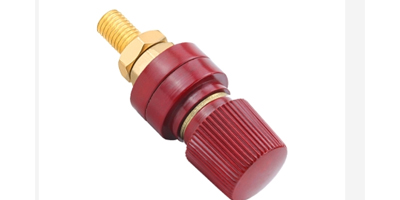Brass binding posts for welding machines play a crucial role in the electrical connection system of welding machines. Their bearing capacity is directly related to the performance, safety and service life of welding machines. Understanding their bearing capacity in multiple aspects is of great significance for the rational selection, correct use and effective maintenance of brass binding posts.

1. Current Bearing Capacity
1.1 Rated Current Parameters
♦Brass binding posts have specific rated current values, which are determined by multiple factors such as material characteristics, size specifications and heat dissipation design. For example, a common type of brass binding post may have a rated current of 100A, which means that under normal working conditions, it can stably transmit a current of 100A without overheating, burning out or other abnormal situations. The rated current of brass binding posts produced by different manufacturers may vary due to differences in design and manufacturing processes.
1.2 Factors Affecting Current Carrying Capacity
♦The purity and quality of the material have a significant impact on the current carrying capacity. High-purity brass has better electrical conductivity and can transmit current more effectively, reducing power loss and heat generation inside the binding post. For example, compared with brass binding posts with more impurities, those with a higher copper content can usually carry a larger current under the same size.
♦The size of the binding post is also crucial. A thicker diameter and a larger cross-sectional area can reduce resistance and thus allow a larger current to pass through. For example, a brass binding post with a diameter of 8 mm has a significantly higher current carrying capacity than one with a diameter of 5 mm. Under the same other conditions, its current carrying capacity may increase from 50A to about 150A.
♦Heat dissipation conditions cannot be ignored either. Good heat dissipation design, such as having heat sinks or being installed in a well-ventilated position, can dissipate the heat generated during the current transmission process of the binding post in time, avoiding heat accumulation and excessive temperature. If the brass binding post is installed in a closed and narrow space without heat dissipation measures, the current it can bear will be greatly reduced, probably only 50% - 70% of that under normal heat dissipation conditions.
2. Mechanical Bearing Capacity
2.1 Tensile and Compressive Strength
♦Brass binding posts need to have a certain tensile strength to withstand the pulling force that may be exerted when connecting wires. For example, in some industrial welding machines, since the wires are relatively thick and need to be moved or adjusted frequently, the binding posts may be subjected to relatively large pulling forces. Generally speaking, high-quality brass binding posts should have a tensile strength of 200 - 300 newtons per square millimeter so as to ensure that they will not break or deform during normal use due to pulling forces.
♦Compressive strength is also an important indicator. When tightening the connecting nuts or being squeezed during the installation process, the binding posts need to be able to withstand the corresponding pressure. Their compressive strength is usually about 300 - 500 newtons per square millimeter, ensuring that they will not be crushed or damaged during the installation and use process, thus maintaining a stable electrical connection.
2.2 Vibration Resistance
♦Welding machines will generate vibrations during the working process, and brass binding posts must have good vibration resistance. Their structural design and the toughness of the material enable them to maintain the stability of the connection under certain frequencies and amplitudes of vibrations. For example, adopting special thread structures or adding cushion pads and other designs can effectively reduce the impact of vibrations on the connection of binding posts, prevent wire loosening or wear of the internal connection points of binding posts caused by vibrations, and ensure reliable current transmission in a long-term vibration environment.
3. Temperature Bearing Capacity
3.1 Normal Working Temperature Range
♦Brass binding posts have a suitable normal working temperature range. Generally, when continuously transmitting the rated current, their surface temperature should be maintained between 50°C and 80°C. Within this temperature range, the material properties of brass binding posts can remain relatively stable, and the reliability of electrical connections is relatively high. For example, when the temperature is within this range, the contact resistance will not increase sharply due to the temperature rise, thus ensuring the stable transmission of current.
3.2 High Temperature Limit and Its Impact
♦However, when the temperature exceeds a certain high temperature limit, brass binding posts will face many problems. For example, when the temperature exceeds 150°C, the hardness and strength of brass will begin to decline, which may lead to the deformation of binding posts, affecting their mechanical properties and the stability of electrical connections. Meanwhile, high temperature will also accelerate the oxidation process of brass, forming an oxide layer on the surface of binding posts, further increasing the contact resistance, reducing the efficiency of current transmission, and even may cause local overheating, sparking and other safety hazards, seriously affecting the normal use and service life of welding machines.